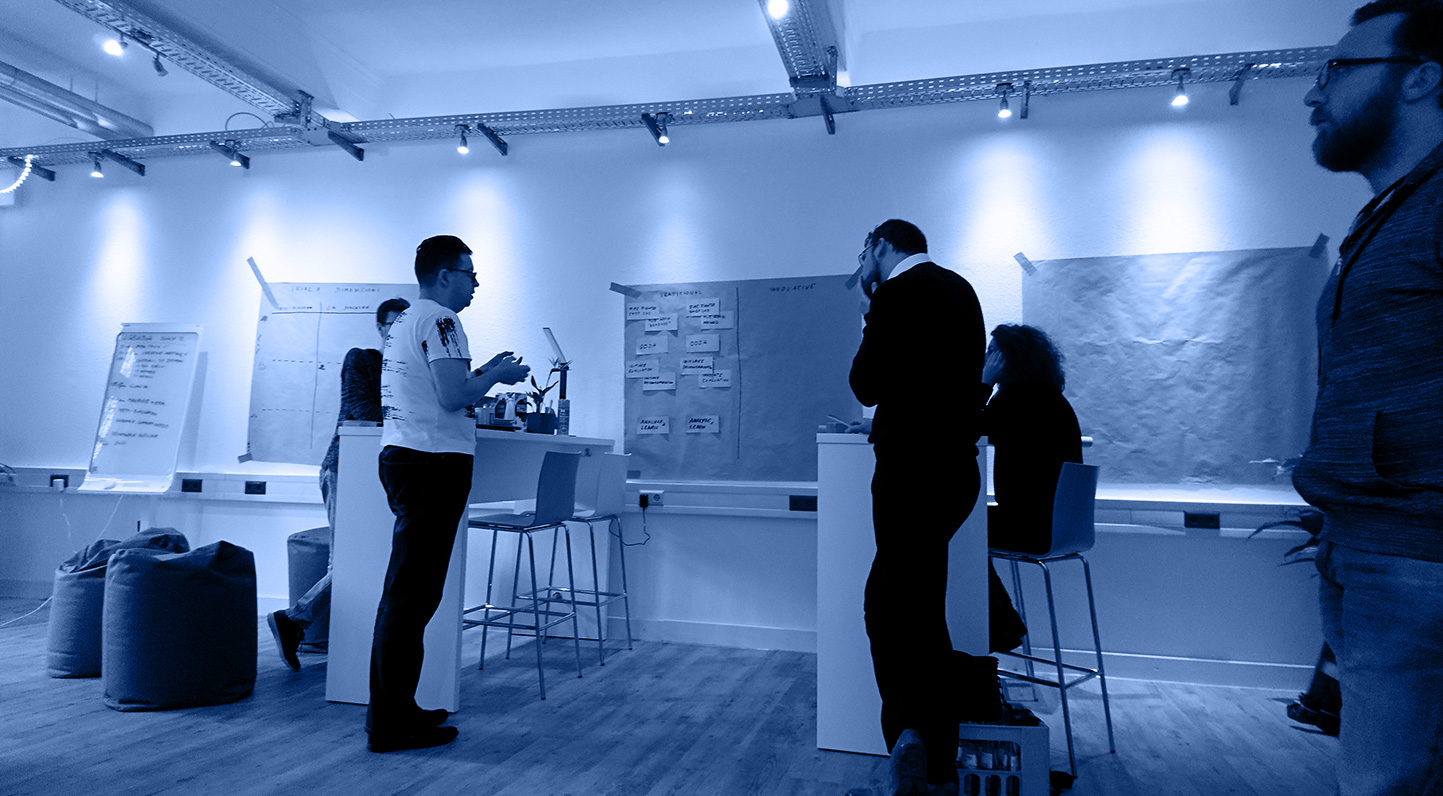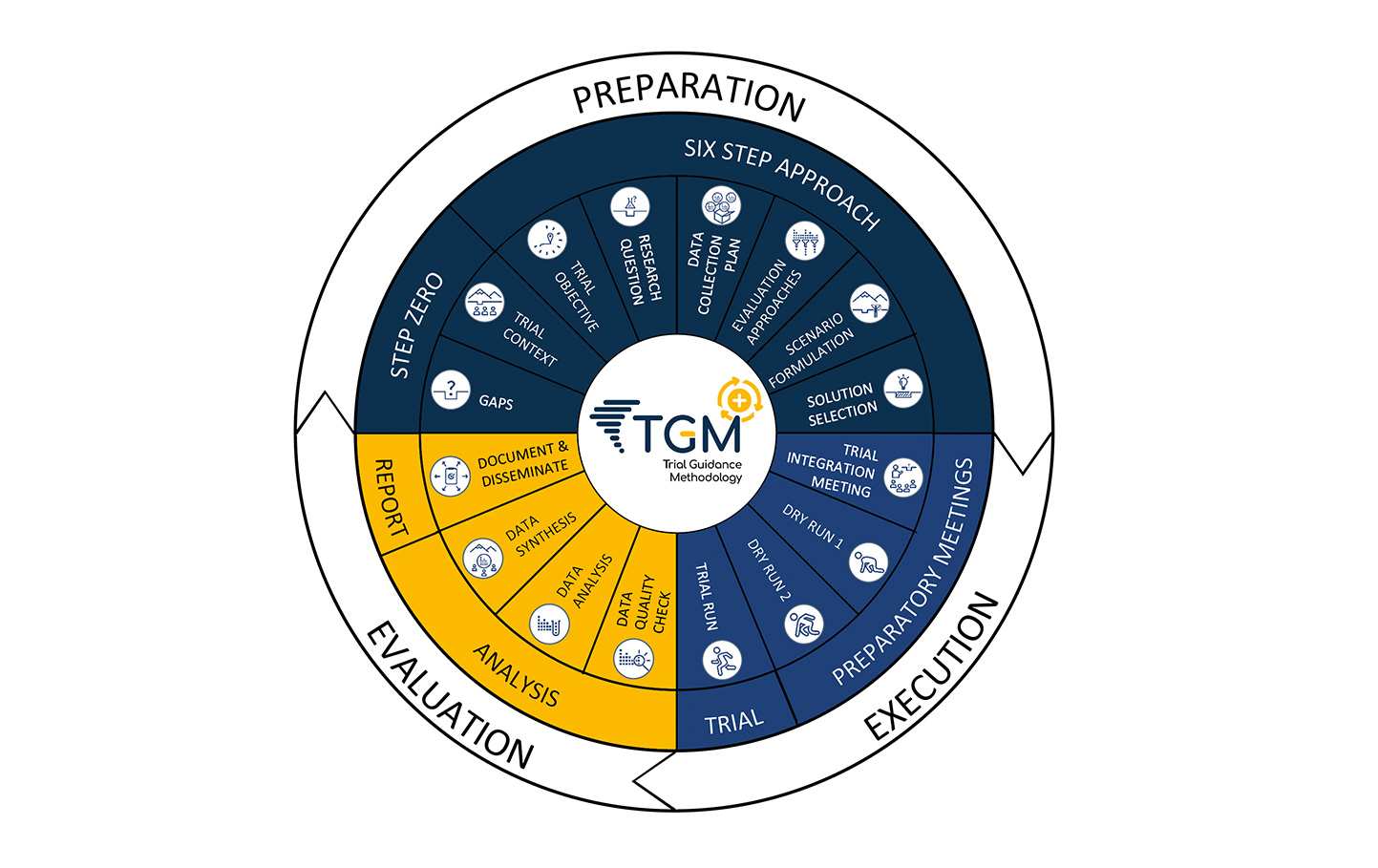A Bird’s-Eye view on the TGM
three phases
The TGM consists of three main phases:
- Preparation
- Execution
- Evaluation
In this handbook, you will find a detailed explanation of the preparatory six step approach and the execution and evaluation phases. Before you start reading, you may want to have an overview of the methodological approach.

The preparation phase consists of two tasks:
Task 1 is the so-called step zero (S0), the prerequisite for all trials. It involves the identification and the specification of gaps relevant in your context. To highlight the importance of S0, it is depicted separately in the right bar at the descriptions of the steps.
Task 2 is the design of your trial. The design follows an iterative and non-linear six step approach. Identify the trial objectives first and then formulate one or more research questions. In the trial you should address your questions. The goal is not to elaborate a research paper, but to generate robust results regarding the added value of solutions, which are relevant for your specific context. To do this, you need to put in place an appropriate data collection plan as well as having in mind evaluation approaches and metrics to analyse the data collected during your trial. To conduct the trial, realistic scenarios must be developed and solutions to be trialled selected to allow you to ascertain whether they could be
innovative.
Once the trial design has been developed, you are ready for the execution phase, which starts with the trial integration meeting (TIM). The TIM is crucial to align the perspectives of relevant stakeholders involved in the trial before the arrangements are tested at the location where the trial takes place (dry run 1). The full rehearsal of the trial is called dry run 2. After dry run 2, you are ready to run your trial.
After having executed your trial, the data collected can be analysed and disseminated. The main evaluation activities deal with checking and analysing the collected data according to the predetermined evaluation approaches. When the analysis is done, you are ready to synthetise the results providing you evidence on the impact of your solutions of interest and to disseminate the results within and beyond your community.
If you are ready to dig deep into the TGM, turn the page and start your journey.

